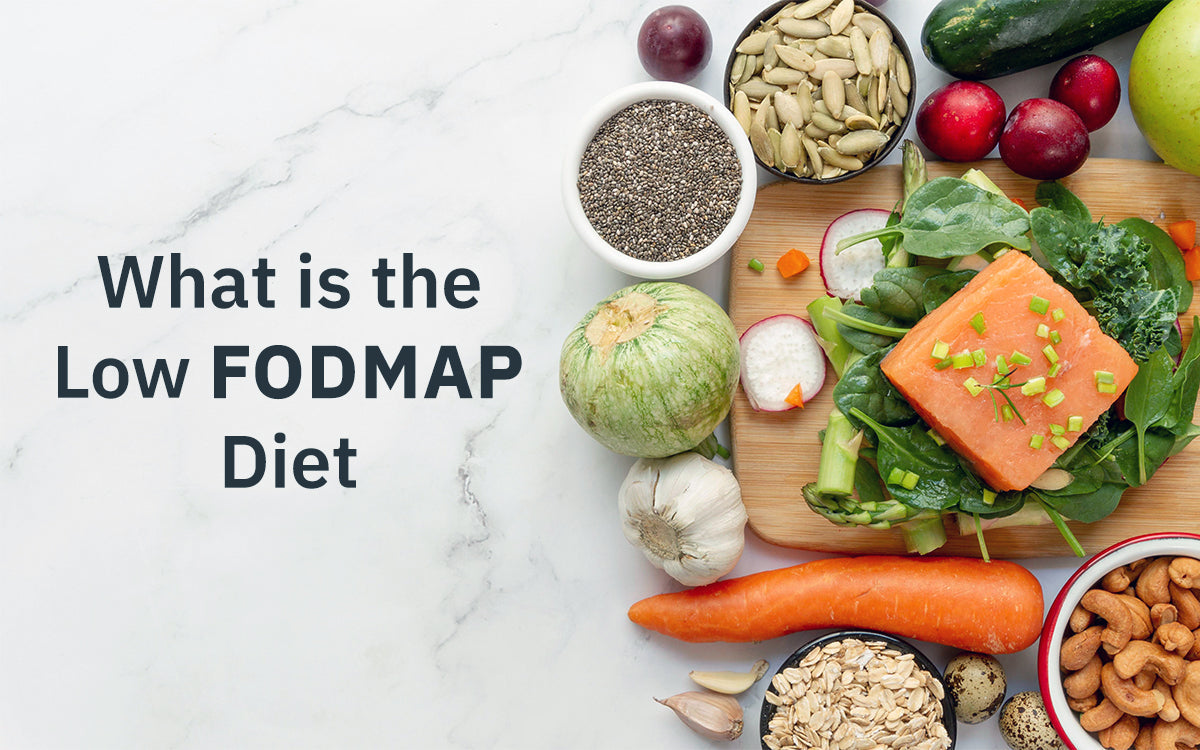
What Is the Low FODMAP Diet and How Can It Support Digestive Comfort?
FODMAP is an acronym for Fermentable Oligosaccharides, Disaccharides, Monosaccharides, and Polyols. These are groups of carbohydrates that are poorly absorbed in the small intestine. Because they ferment quickly in the gut and pull water into the digestive tract, they can sometimes cause:
- Excess gas
- Bloating
- Abdominal pain
- Irregular bowel habits
Not everyone is sensitive to FODMAPs, but for individuals who are, reducing them can bring significant comfort.
How Does the Low FODMAP Diet Work?
The low FODMAP diet isn’t about permanent restriction, it’s a structured process designed to help identify which foods trigger digestive discomfort. It typically has three stages:
- Elimination Phase: High-FODMAP foods (like onions, garlic, wheat, beans, certain fruits) are avoided for a short period, usually 2–6 weeks.
- Reintroduction Phase: Foods are slowly reintroduced, one FODMAP group at a time, to identify personal triggers.
- Personalization Phase: A long-term eating pattern is created, including tolerated foods and excluding only those that consistently cause issues.
This method is best done under the guidance of a dietitian or healthcare provider, as it ensures nutritional adequacy while still managing digestive comfort.
Which Foods Are High in FODMAPs?
High-FODMAP foods are not “bad foods”, many are nutrient-dense. But for those sensitive to them, these can trigger discomfort:
- Vegetables: Onions, garlic, cauliflower, mushrooms
- Fruits: Apples, pears, cherries, watermelon, mango
- Grains: Wheat, rye, barley
- Legumes: Lentils, chickpeas, beans
- Dairy: Milk, yogurt, soft cheeses (due to lactose)
- Sweeteners: Sorbitol, mannitol, xylitol, honey
Which Foods Are Low in FODMAPs?
Low-FODMAP foods are considered easier to digest for sensitive guts and are the foundation of the elimination phase:
- Vegetables: Carrots, zucchini, spinach, bell peppers, eggplant
- Fruits: Strawberries, blueberries, oranges, grapes, bananas (firm)
- Grains: Rice, oats, quinoa, gluten-free bread/pasta
- Proteins: Chicken, fish, eggs, firm tofu
- Dairy Alternatives: Lactose-free milk, almond milk, coconut yogurt
- Seasonings: Herbs, spices, small portions of seeds and nuts
These foods allow individuals to maintain a diverse, nourishing diet while reducing digestive stress.
Who Might Benefit from a Low FODMAP Diet?
The low FODMAP diet was developed specifically to support those with gut issues. Research shows it can help reduce bloating, abdominal pain, and gut discomforts.
It may also be considered for people who regularly experience discomfort after eating, although it is not recommended as a long-term restrictive diet for the general population. Because high-FODMAP foods are often prebiotic-rich (feeding beneficial gut bacteria), the diet is ideally used as a temporary tool, not a permanent lifestyle.
How Does SFG Biome Gut Superblend Fit into a Low FODMAP Approach?
One challenge of following a low FODMAP diet is that reducing certain high-FODMAP foods may also reduce prebiotic fibers that nourish the gut microbiome. Over time, this can make it harder to maintain microbial diversity and balance.
This is where SFG Biome Gut Superblend becomes a valuable complement.
Each serving contains:
- Low-FODMAP friendly fibers that are gentle on digestion while still supporting microbial activity
- 11.5 billion CFU probiotics from clinically studied strains to help maintain gut balance even with reduced food variety
- Phytobiotics (polyphenol-rich plant fibers) that nourish good bacteria without triggering sensitivities
- Postbiotics that help create a more stable gut environment
By filling the gap left by temporarily limiting high-FODMAP foods, Gut Superblend helps individuals on the diet sustain microbiome health while still identifying personal food triggers.
Final Thought
The low FODMAP diet is a structured, evidence-based way to uncover food sensitivities and improve digestive comfort. While it can help reduce symptoms, it may also limit beneficial fibers in the short term. By adding SFG Biome Gut Superblend, individuals gain a simple, daily way to support gut balance with low-FODMAP prebiotic fibers, probiotics, phytobiotics, and postbiotics, making the journey smoother and more sustainable.